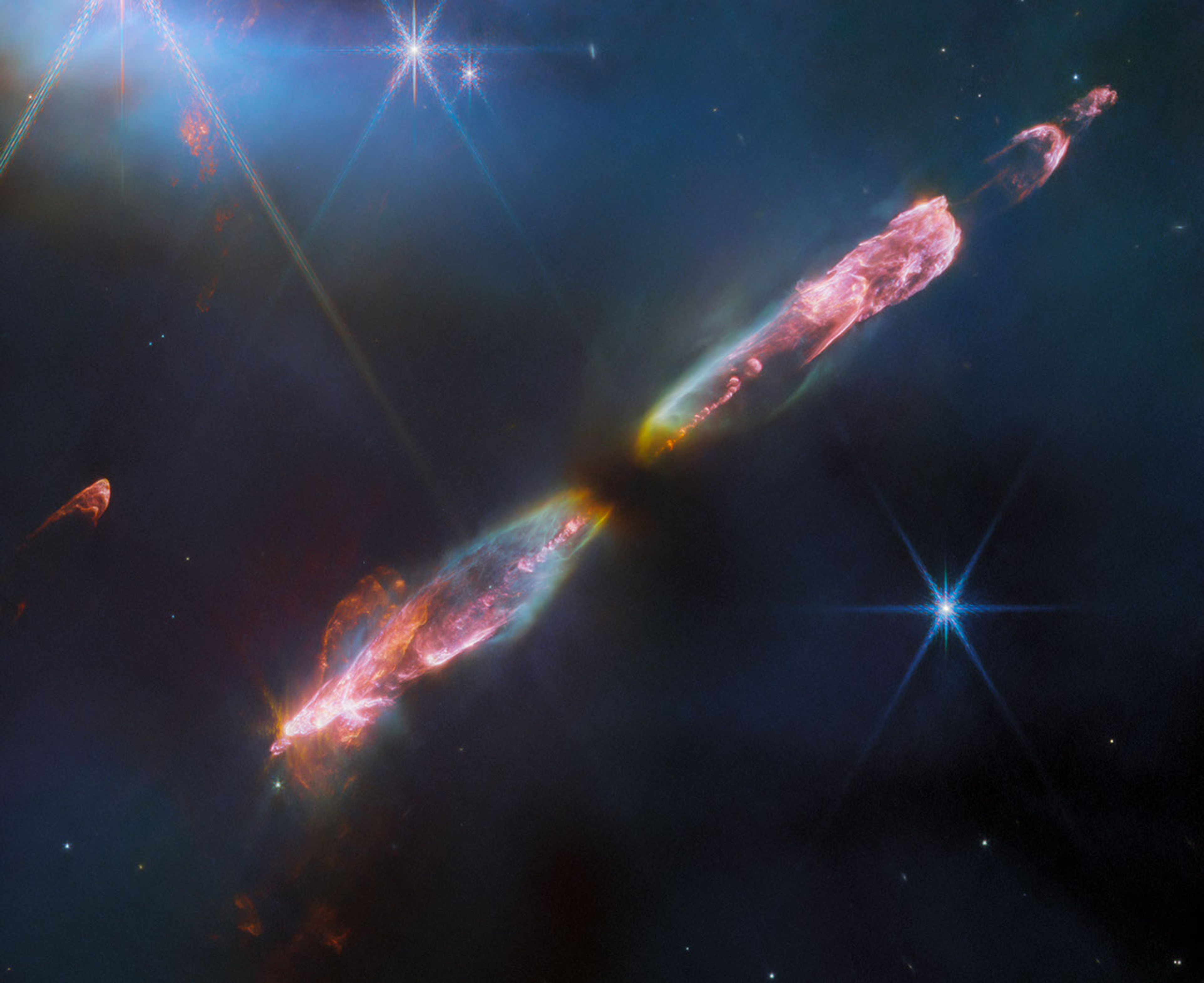1 min read
HH 211 (NIRCam Image)

NASA’s James Webb Space Telescope’s high resolution, near-infrared look at Herbig-Haro 211 reveals exquisite detail of the outflow of a young star, an infantile analogue of our Sun. Herbig-Haro objects are formed when stellar winds or jets of gas spewing from newborn stars form shock waves colliding with nearby gas and dust at high speeds
The image showcases a series of bow shocks to the southeast (lower-left) and northwest (upper-right) as well as the narrow bipolar jet that powers them in unprecedented detail. Molecules excited by the turbulent conditions, including molecular hydrogen, carbon monoxide and silicon monoxide, emit infrared light, collected by Webb, that map out the structure of the outflows.
About the Object
- R.A. PositionR.A. PositionRight ascension – analogous to longitude – is one component of an object's position.03:43:56.52
- Dec. PositionDec. PositionDeclination – analogous to latitude – is one component of an object's position.+32:00:52.8
- ConstellationConstellationOne of 88 recognized regions of the celestial sphere in which the object appears.Perseus
- DistanceDistanceThe physical distance from Earth to the astronomical object. Distances within our solar system are usually measured in Astronomical Units (AU). Distances between stars are usually measured in light-years. Interstellar distances can also be measured in parsecs.1,000 light-years
About the Data
- Data DescriptionData DescriptionProposal: A description of the observations, their scientific justification, and the links to the data available in the science archive.
Science Team: The astronomers who planned the observations and analyzed the data. "PI" refers to the Principal Investigator.This image was created with Webb data from proposal: 1257 (T. Ray)
- InstrumentInstrumentThe science instrument used to produce the data.NIRCam
- Exposure DatesExposure DatesThe date(s) that the telescope made its observations and the total exposure time.28 Aug 2022
- FiltersFiltersThe camera filters that were used in the science observations.F162M, F164N, F210M, F323N, F335M, F460M, F466N, F470N
- Object NameObject NameA name or catalog number that astronomers use to identify an astronomical object.HH 211
- Object DescriptionObject DescriptionThe type of astronomical object.Young Stellar Object
- Release DateSeptember 14, 2023
- Science ReleaseNASA’s Webb Snaps Supersonic Outflow of Young Star
- CreditImage: ESA/Webb, NASA, CSA, Tom Ray (Dublin)

This image is a composite of separate exposures acquired by the James Webb Space Telescope using the NIRCam instrument. Several filters were used to sample specific wavelength ranges. The color results from assigning different hues (colors) to each monochromatic (grayscale) image associated with an individual filter. In this case, the assigned colors are: Purple: F162M + F164N, Blue: F210M + F323N, Cyan: F335M, Green: F460M, Orange: F466N, Red: F470N
Share
Details
Laura Betz
NASA’s Goddard Space Flight Center
Greenbelt, Maryland
laura.e.betz@nasa.gov
ESA/Webb, NASA, CSA, Tom Ray (Dublin)































